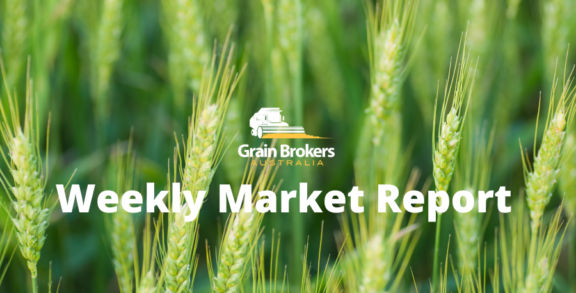
The boats will keep coming …
Weekly Commentary by Peter McMeekin
The increasing requirements of Australia’s domestic grain market have been under the spotlight in recent months as the drought worsens across the eastern states. This is the second consecutive year that we have seen below average grain production in New South Wales and Queensland.
This has led to a significant deficit of feed grains, milling wheat, and malting barley in the eastern states. This grain shortfall must be filled by imports of suitable grain from regions of surplus.
In normal production years, it is quite traditional for grain to move interstate to satisfy domestic demand. New South Wales (NSW) is generally the biggest producer of grain on the east coast and commonly has a surplus that is available to interstate domestic consumers or the export market. Wheat and barley produced in southern NSW regularly make their way into the Victorian market and the same commodities produced in northern NSW are always required to satisfy the huge feed grain demand in southern Queensland.
Australia is traditionally a significant exporter of grain. Consequently, domestic grain prices tend to be highly correlated to world prices. However, in years of drought, the supply and demand imbalance can often lead to grain prices in the affected areas increasing significantly. In fact, they can increase to such an extent that they exceed import parity.
Import parity price is the value of a commodity imported from another country at a location within the importing country (usually the port of entry). It can help to determine whether importing a particular commodity is cheaper or more expensive than procuring it within the country at that same location.
Widescale droughts in Australia, such as we are experiencing this year, always invoke the inevitable question. Why don’t we import grain from overseas if it is cheaper than moving grain within the country? At current prices, United States corn could be imported into Brisbane around $130 (Aussie) less than bringing wheat around the coast from Western Australia.
The Commonwealth Department of Agriculture and Water Resources (DAWR) is responsible for administering two sets of requirements for imported food. These requirements are designed to protect Australia against biosecurity risks, under the Biosecurity Act 2015, and to address food safety, as set out in the Imported Food Control Act 1992.
Australia has imported grain in previous droughts, the most recent being from the United Kingdom in 2003. In accordance with the biosecurity provisions of the import permits issued at the time, the grain had to be devitalised in dedicated processing plants near the ports into which the grain was imported. It then made its way to nearby feed grain consumers, primarily the poultry industry. The grain could not be transported as viable seed into the cropping regions, and those same restrictions would still apply.
Fast forward to 2018 and the geographical footprint of Australia’s feed grain consumers has changed. No longer are a significant proportion located close to the ports. Much of the investment in the last fifteen years has been made up-country, closer to the grain production regions. The expansion of the lotfeeding sector, particularly in southern Queensland, has been dramatic. This means that a vast majority of the east coast feed grain deficit is located within the cropping regions rather than close to the ports.
The Biosecurity Act 2015 requires that all imports of food comply with strict biosecurity conditions for their import. The DAWR is not responsible for ensuring a cattle feedlot on the Darling Downs or a poultry operation in the Riverina has adequate feed grain supplies. Their mandate is to ensure that Australia is protected from harmful pests and diseases (such as exotic weeds or foot and mouth disease) and they work with the import cargo and shipping industries to enforce the strict quarantine regulations.
These regulatory requirements have been under increased scrutiny in the last two years with the discovery of the highly contagious white spot disease in Queensland prawns in 2016. Australia was one of the few countries in the world that had remained free of the disease that affects crustaceans, but it has already decimated prawn farms in parts of Queensland since the outbreak.
Biosecurity breaches such as this have only heightened the resolve of authorities to protect the viability of agriculture in Australia. It is a A$60 billion industry that employs thousands and contributes 3 per cent to the country’s gross domestic product (GDP).
The movement of grain within Australia, whether it be by road, rail or sea does not attract the same biosecurity restrictions as foreign imports. Whilst the drought may be severe in the eastern states, Australia will still have an exportable surplus courtesy of an above average season in Western Australia.
Whilst this is the case the shipping lineup (stem) at Western Australia’s ports will continue to be littered with vessels loading, destination Australia. The boats will keep coming until the east coast deficit is rectified.





